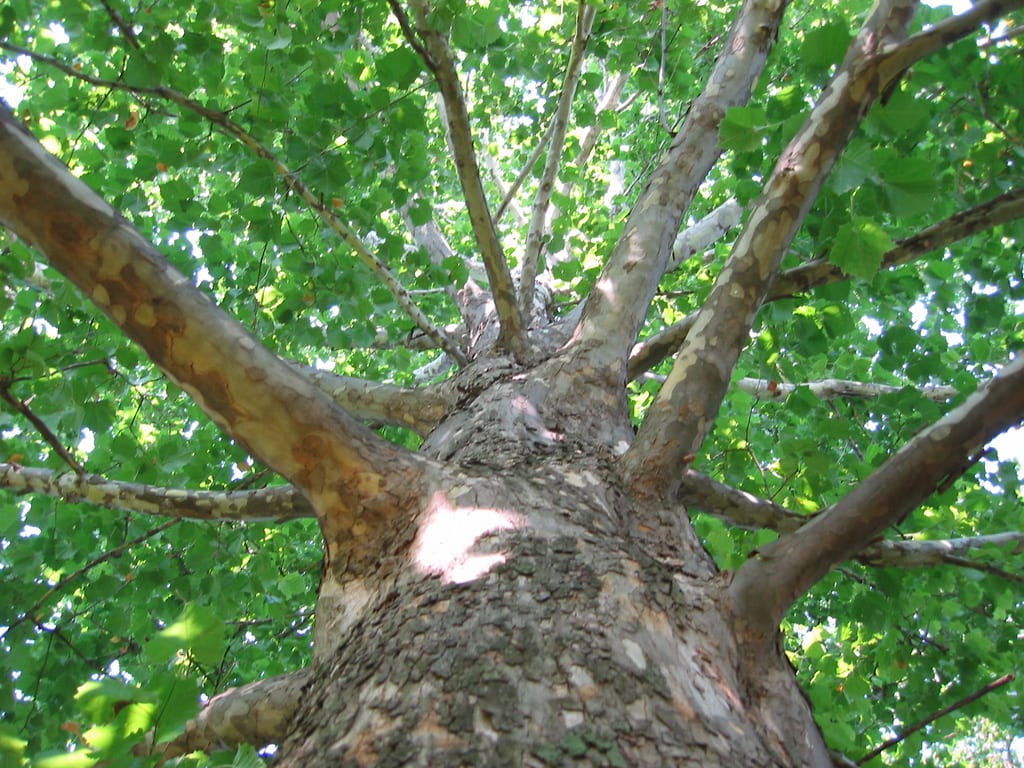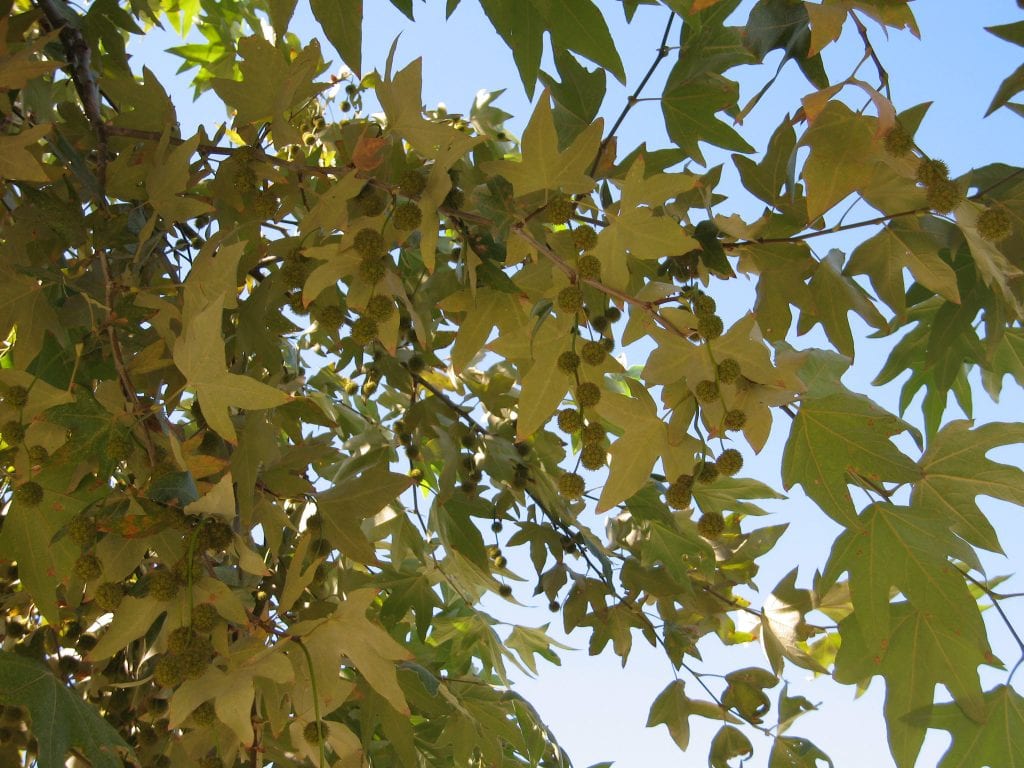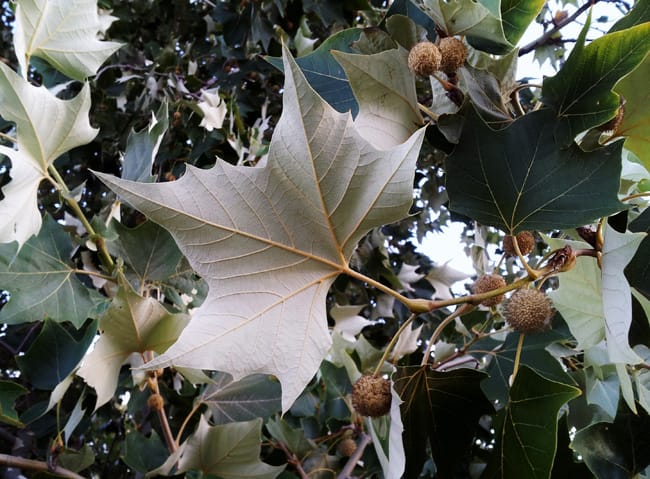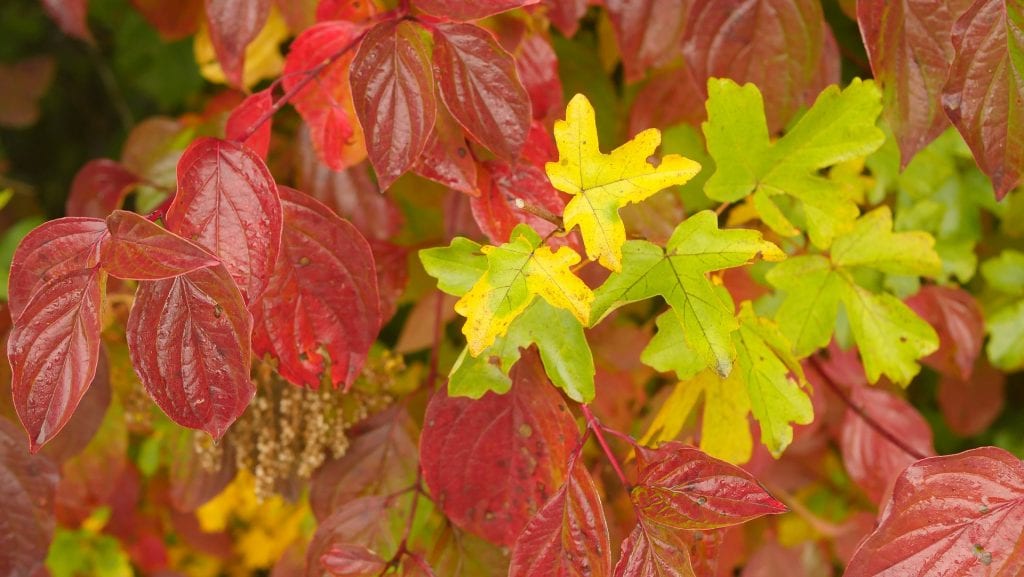Sycamore tree, one of the most attractive views for the landscapers, lies on the top of lists of plant lovers. If you are crazy about trees and greens, then no doubt sycamore is not a new name to you.
Though all trees have their own beauty, but the leaves of sycamore attract visitors from miles away. However, there are many other trees that resemble the sycamore at first glance, but when you get to see them closely, you’ll notice how sycamore shows those distinctive beautiful features that are not comparable to any of the other kind.
So, if you wanna know more about the sycamore tree and are excited to uncover some secrets about it, then keep reading below as we have gathered some interesting information about this handsome tree which you won’t wanna miss out on. So let’s begin:
What is Sycamore Trees?
For those who are still new to the sycamore tree. Let us give you a brief introduction about what it really is. The sycamore tree is a parent tree species that involves many sub kinds native to their region. The term Sycamore has been derived from a Greek word sūkomoros meaning fig-mulberry. Sycamore trees belong to the genus Platanus includes many other tree species with similar leaf structures. The most popular tree belonging to the sycamore family is the American Sycamore which often goes by the name of simply “sycamore tree” in America, however, it shouldn’t be confused with other sub kinds of the tree. There is a total of 11 known kinds of sycamore tree which are listed below:
- The sycamore fig or fig-mulberry is native to the Middle East. It is the most ancient type of sycamore tree.
- The Old World Sycamore which is also called as Chinar tree in its native region.
- The Arizona Sycamore Tree
- The California Sycamore Tree or the Western Sycamore.
- The American Sycamore Tree
- Pink Sycamore
- Bastard Sycamore
- Satin sycamore
- Celery Wood (white sycamore)
- Large Laurel (Cryptocarya which is an Extinct Species)
- Mountain Sycamore
Sycamore Tree Origination
Though the exact origination of the Sycamore tree is still unknown, as the tree can be cultivated all around the world today, however it is believed worldwide that sycamore trees originated in Europe as per the recorded estimation. Yet another fact that hints that the sycamore tree must have been originated in the Middle East are the most ancient species “Bible Sycamore” which is also called as the Fig-mulberry.
What Does a Sycamore Tree Look Like?
As already said that sycamore tree is a name to the variety of different trees whit distinctive features and looks. Not all sycamore trees are the same. Each one has its own characteristic looks which differentiate them from others.
However, the basic features of all the sycamore trees falling in the genus Platanus are the same. The features and looks that are specific to the sycamore family include:
Leaves: the leaves of trees belonging sycamore family have multiple lobes which are sharply edged.
Bark: all the sycamore trees, no matter which region they blog to have a multicolored patchy bark.
Seed Balls: unlike other trees which often produce fruits or flowers, the sycamore family is known to produce seed balls either edible or non-edible hanging freely with the branches.
How Fast Does a Sycamore Tree Grow?
Sycamore trees are known for their rapid growth speed, yet can also grow at a moderate speed too. They have been estimated to grow 2 feet per year. Their minimum height is recorded to be 70 feet, however, they typically reach 100 feet. In rare circumstances, sycamore trees can even cross 100 feet. The width of a sycamore tree can be anywhere between 60 to 80 feet. They have a very long lifespan, however, you can never predict.
Popular Types of Sycamore Tree
Though there are many kinds of a sycamore trees, each of them which we can’t discuss in detail as it will take too long. So let us walk you through a few of the most well-known species of sycamore tree which are popular all around the world, especially in the United States. These species are native to the United States but can also be found in other regions too. Let’s discuss them in detail.
American Sycamore
The first one, and the most famous one too is the American Sycamore tree, the traditional tree of which we all are aware of. The American Sycamore Tree, scientifically known as Platanus occidentalis, has many other local names for which it is known for. Some common names include Water Beech, occidental plane, buttonwood, American planetree, and western plane.
American Sycamores are native to the eastern United States. An American sycamore tree is typically 100 to 131 feet tall, yet the tallest American sycamore has been measured to be 175 feet tall, but that an exceptional situation.
American sycamore trees are known for their molted bark, mostly with white, green, gray, and brown patches. American sycamore often divides into numerous trunks near the ground which gives it a distinct multi-stemmed look.
American sycamore has three-lobed leaves, ranging from light to dark green color. However, their color turns yellow in the fall or spring. The lobes of the leaves have shallow sinuses between them, which is why it is often mistaken as maples which resembles them in the leaves but are completely different plants.
They produce dark-brown spiked balls that hang freely from the stem and turns into reddish-brown flowers before falling in autumn.
Apart from providing a cool shade, American sycamore is widely used to make butcher’s block as well as boxes and other storage accessories.

English Sycamore
English Sycamore Trees, botanically known as Platanus acerifolia is a native to London, despite being originated in Spain. Some other local names include London planetree or simply London plane.
An English sycamore tree is a hybrid between American sycamore and another one called the Old Word Sycamore which we will discuss further. The characteristic property of the English Sycamore for which it is best known for is the production of its seed balls, unlike another sycamore tree, English Sycamore is the only one that produces seed balls in pairs.
The leaves of English Sycamore have three lobes (can be five in some circumstances) with deep clefts among them. Their trunks are quite straighter and short in length, unlike all the other sycamores. There is another distinct feature of English Sycamore that is the toothed surface roughness on their leaves. English Sycamore has brown and white patches on its bark, where the brown part is the outer one and white is the inner part of the bark. The English sycamores are expected to be 75 to 100 feet tall.
California Sycamore
Another well-known type of Sycamore tree includes California Sycamore which is also called as Platanus racemosa botanically. There are a few other names for California sycamore like California Plane or Western Sycamore. They are mostly found along the western coast of the United States but can be grown in other parts too, in rare circumstances.
California Sycamore is known to be the favorite habitat of most of the wildlife, mainly birds like hawk, woodpeckers, owls, and hummingbirds. Apart from a wildlife habitat tree, California sycamore is also used as an ornamental tree and found in public parks as well as landscaping sites.
These sycamores are highly drought tolerant, therefore can thrive even in the full sun in USDA zones 9 to 7. California sycamore trees resemble American sycamore in many features, however, they also show distinct features like maple-like leaves with five large lobes, larger than the American sycamore, thin branches, and barks with an attractive patchwork like all the others with a color combination of pinkish grey and white. The main feature that distinguishes California sycamore from all the other sycamores is their fuzzy pom-pom seed balls. California Sycamore has been estimated to grow as high as 110 ft.

Mexican Sycamore
Mexican Sycamore tree, botanically pronounces as Platanus Mexicana is the shortest type of sycamore tree. Native to the Mexican region, this sycamore is mostly found near the streams and rivers. Even though they often grow near the water, Mexican sycamore is still quite a heat and drought-tolerant. That’s the reason they can also thrive in the full sun just like California sycamore and can be grown in USDA zone 5 to 9. Mexican Sycamore is mostly found in the western United States, though can be grown in other regions too.
As already said, Mexican sycamores are a bit shorter in size than any of the other sycamores, reaching the optimum height of 50ft. while some of them have even be measured 40ft.
Just like the California sycamore, the Mexican tree is also used as an ornament due to its small, glossy maple-like five-lobed leaves. It is widely used in public parks and residential gardens due to its short environmentally friendly height. However, its roots are quite big and vigorous and can damage the buildings, therefore it is suggested not to grow Mexican sycamore too much near houses and buildings, but growing them in large parks is not a problem at all.

Old World Sycamore
The most ancient and popular sycamore tree is named as Old World Sycamore. It is scientifically entered as Platanus orientalis. Old World sycamore has many other names, the most common of which is Oriental Planetree. Though Old World Sycamore is quite tall, but not as tall as other sycamore trees reaching approximately the height of 100 ft. however, the thing they are known for is their thick and heavy crown which is spread all around the area, giving it a vast huge look.
Native to the Middle East and Eastern Europe, Old World Sycamore mostly grows near the damp soil near the rivers, just like all the other sycamores. Just like California and Mexican Sycamore, Old World can also thrive in the full sun due to its heat and drought resistance tendency. That’s the reason they can be grown in USDA zone 7 to 9.
Old World Sycamore features thick and large leaves with 5 to 7 lobes. They are dark green wide leaves with quite deep cuts between the lobes. As for the bark, they feature brownish-gray bark with the patchwork of whitish-gray that gives it an ornamental look.
Arizona Sycamore
Arizona Sycamores are also included in the short sycamore trees lists, however not shorter than the Mexican, ranging from 70 to 80ft in height. Arizona Sycamores are native to Arizona as well as New Mexico and are botanically written as Platanus wrightii. Arizona Sycamore can be grown in many other regions, however, their natural habitat is confined to specific places and is still rare in North America.
Though Arizona Sycamores can grow in USDA 7 to 11, yet they are not drought and heat resistant and therefore only grows near the excessive supply of water like rivers and streams.
Arizona Sycamores also have 3 to 5 lobes on their leaves with deep notches between these lobes and are similar in looks to the maple tree. Their bark has smooth patches of green and white camouflage.
How to Identify a Sycamore Tree?
Though there is no need to identify a sycamore tree as you know it when you see it, even in the crowd. This is because of their patchy colorful bark. However, there are some trees that resemble the sycamore and are often mistaken for them such as maple, therefore you must know how ho to differentiate the sycamore tree from the maple tree. So to identify a sycamore tree, you just have to pay attention to its three main aspects, the leaves, the bark, and the ball (often called as the sycamore fruit).

By Their Leaves
You can identify a sycamore tree by counting the number of its lobes. Almost all the sycamores have 5 to 7 lobes. Though some of them also have 3 lobes, but five is more common. So whenever you see a five-lobed leave tree, there is a 70% chance that the tree is sycamore. Another aspect to consider while identifying a sycamore by leave is to pay attention to its color. Almost all the sycamore shows dark-green color in summer and spring and turns yellow in the autumn. Their leaves also have rounded teeth around the border.
By Their Barks
You can identify a sycamore by just taking a glance at its peeling, rigged patchy bark. All the sycamore have patchwork on their barks due to the fact that they grow too fast and their bark can’t take it and start to peel off. Along with the patches, their barks also have a camouflage pattern of different colors.
By Their Seed Balls
Another distinct feature of sycamore trees is their seed balls which are basically their fruits (also called as sycamore figs), they are small in size, like that of a tennis ball, and hang freely on the stem. Some are smooth while others have small spikes on them. The American sycamore has single-hanging seed balls while others may have them in groups of three to five.
There are a few more features by which you can identify a sycamore tree which includes a dome-shaped extra-wide canopy, V-shaped helicopter seeds (only in few types), yellow-green small flowers (male and female, both on the same tree.
Different Uses of Sycamore Tree
As a Natural Habitat: Sycamore trees provide a natural habitat to a number of wild animals, mainly birds. Sycamore trees have nearly or entirely hollowed trucks that provide the best nesting sites for cavity-nesting birds, such as owls, chimney swifts, flycatchers, and woodpeckers. That swinging mammal, the Bat also uses sycamore as a home sometimes. Some of the branch nesting birds like hawks, hummingbirds, and goldfinches also use their branches to make their homes.
Read More: Importance Of Tree Trimming And Why It Should Only Be Performed By The Professionals?
As a Feeder for Wildlife:
Apart from habitat, sycamore trees are also a great source of meal for both animals and humans. A western tiger swallowtail butterfly larva consumes food from sycamore leaves while many other animals like squirrels get their food from its seed balls. Humans too consume Sycamore seed and Sycamore fruits as a meal.
As a Shade Provider:
Sycamore trees are great shade providers mainly due to their large widespread canopy crown. That’s why many sycamore trees such as California and Mexican are often grown in public parks to provide shade to their visitors. Some types of Sycamores are also grown in big houses for shade. However, there are certain types of sycamore that have quite aggressive roots and therefore they shouldn’t be grown near the buildings.
As an Ornament:
Some sycamores like America, California, Mexican, and English are used as ornaments in public places, parks, and resorts due to their attractive looks. The colorful camouflage patchwork on the bark of sycamores enhances its beauty along with wide lobed leaves, which is why sycamores are widely used in naturally decorating the parks.
As Home Decors and Furniture:
Many home decorating items and furniture like headboards, cupboards, dressers, side tables, center tables, bed frames, etc are made with wood from sycamore trees.
As A Kitchen Utensil:
Kitchen utensils including cutting boards, butcher’s block, and countertops also use wood from sycamore trees due to their tough and strong bark.
Benefits of Sycamore Tree and Its Fruit
Just like the sycamore tree has its numerous benefits for both humans and animals, the fruits derived from it also carry a large number of health benefits for its eaters. Let’s have a look at the few of them, but first, let see what nutrition’s are packed within a single sycamore-fig:
- Carbohydrates: 20 grams
- Fats: 0.3 grams
- Proteins: 0.8 grams
- Fiber: 3 grams
- Sugar: 17 grams
- Energy: 75 kcal
Health Benefits
- The fruit and even the leaves of the sycamore tree provide great health benefits for humans including the treatment of many chest-based diseases, aids in relieving and treating jaundice, lung problems, sore throat, diarrhea, nausea, etc.
- It also helps in relieving bone pain, and hernia in the neck. Moreover, it is a cure for many skin-related issues such as skin burns, psoriasis, ringworms in the skin as well as an antidote for snake bites.
Some Facts about Sycamore Tree
Let’s discover some amazing facts about sycamore tree which you never knew:
- Sycamore trees are included in a few of the largest tree breeds in the United States reaching as much as 150 feet in height.
- Sycamore trees shed a lot of leaves throughout the year.
- These trees only grow near streams and rivers, where there is a lot more water.
- As the sycamore tree grows in age and becomes older, a fungus begins it consumes its heartwood, because of which the bark of the tree becomes useless and cannot be used for anything.
- The cavity in an old sycamore tree which is the result of fungus attach serves as a nesting place for many birds and animals like owls, hummingbirds, and squirrels.
- Even though sycamore provides a great shade in residential parks, they can’t be grown near houses due to the enormous sizes of their trunks and aggressive roots.
- Sycamore trees are the only trees in the whole of North America with the largest leaves.
- Sycamore trees have male and female flowers, both on the same plant.
- The seeds of sycamore trees are often called as “helicopters” due to their continuous rotation in the wood, just like that of the propeller of a helicopter.
- A large number of sycamore trees were destroyed by plagues in Egypt which potentially disturbed the whole environment due to the fact that sycamore served as a big source of food for the locals.
Pests and Other Problems of Sycamore Tree
Even though sycamore trees come with lots of benefits, they are also accompanied by some big troubles too. Sycamore trees suffer from many problems like pests, tree diseases, fungus, bacteria, and a lot more. The main diseases that attack sycamore trees include anthracnose and P. orientalis. They also fall prey to a disease that defoliates the tree, making it look like frost damaged.
Apart from that, if you want to know about Luxury Holiday Cottages Then please visit our Daily Bites category


